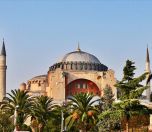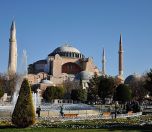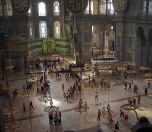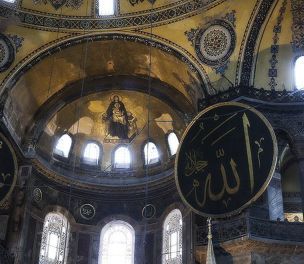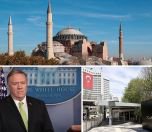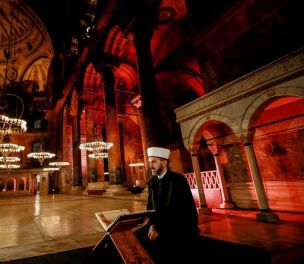(File photo)
Click to read the article in Turkish
As the debate on whether Hagia Sophia should remain as a museum or converted into a mosque continues, Peoples' Democratic Party (HDP) deputy Hüda Kaya has said it should be a church.
It was built for Christians and therefore should be reconverted into a church, she told Halk TV.
Built in the sixth century in İstanbul's European side, Hagia Sophia was converted into a mosque by the Ottoman Empire took the city in 1453. Kaya claimed that this was not in accordance with Islamic law, saying that such practices began after the death of Muhammad.
"There are hundreds of occupied buildings like Hagia Sophia," she said, adding that the monument should be made "the house of Allah" by making it a church.
The debate on Hagia Sophia's status has revived again after the ruling Justice and Development Party (AKP) declared its intention for the conversion of the monument.
Several countries, including the US, Russia and Greece, have urged the government to keep Hagia Sophia as a museum.
The Council of State, the highest administrative court of the country, is expected to announce its decision on an application regarding the monument's status by July 17. The application alleged that Hagia Sophia's conversion to a museum in 1935 was unlawful as it was the personal property of Ottoman Sultan Mehmet II.
About Hagia SophiaHagia Sophia with its innovative architecture, rich history, religious significance and extraordinary characteristics has been fighting against time for centuries, is the largest Eastern Roman Church in Istanbul. Constructed three times in the same location, it is the world's oldest and fastest-completed cathedral. With its breathtaking domes that look like hanging in the air, monolithic marble columns and unparalleled mosaics, it is one of the wonders of the world's architecture history. Today's Hagia Sophia is the third building constructed in the same place with a different architectural understanding than its predecessors. By the order of Emperor Justinianos, it was built by Anthemios from Tralles (Aydin) and Isidoros from Miletos (Balat). The construction started in 532 and was completed in five years and opened for worship in 537 with a great ceremony. When Sultan Mehmet the Conqueror conquered the city, he converted it into his imperial mosque. It continued its existence with the addition of Ottoman architectural elements and turned into a museum in 1935. Known for its Imperial Gate, Beautiful Gate (Splendid Door) and Marble Gate, Hagia Sophia has 104 columns, some of which are brought from ancient cities. The "Omphalion" section where the emperors crowned stands out with marble workmanship like these pillars. Hagia Sophia fascinates people by not only with its architectural design, but also by its gold-plated, silver-plated, glass, terracotta and colored stone mosaics, and the original ceiling mosaics of the 6th century with their floral and geometric motifs. The mosaics with figures following the icon ban in the 8th century especially Mother Mary depicted with child Jesus in her arms, the Archangel Gabriel and the Archangel Michael and Deisis stage mosaics must be seen. Sultan Abdulmecid's Mosaic tughra was built between 1847 and 1849 during the restoration by the Fossati brothers. Eight large round plates that were added during the Ottoman period are the work of famous calligrapher Kadıasker Mustafa İzzet during the reign of Sultan Abdülmecid. Two solid marble cubes in the side aisles, which can receive an average of 1250 liters of liquid, were brought from the ancient city of Bergama during the reign of Sultan Murad III. The Hagia Sophia Museum is famous for its exterior as well as its interior. The mausoleums of Ottoman Sultans outside the building are among the first to visit. There are tombs of princes and mausoleums of Sultan Selim II, Sultan Murad III, Sultan Mehmed III, Sultan Mustafa I, and Sultan Ibrahim whose reigns followed one another. The four minarets of Hagia Sophia, known to be built by Mimar Sinan, the fountain of Sibyan (elementary) school, the fountains, buttresses, the treasury building and the soup kitchen are also increasing the magnificence of the structure. Source: Ministry of Culture and Tourism |
(EMK/VK)





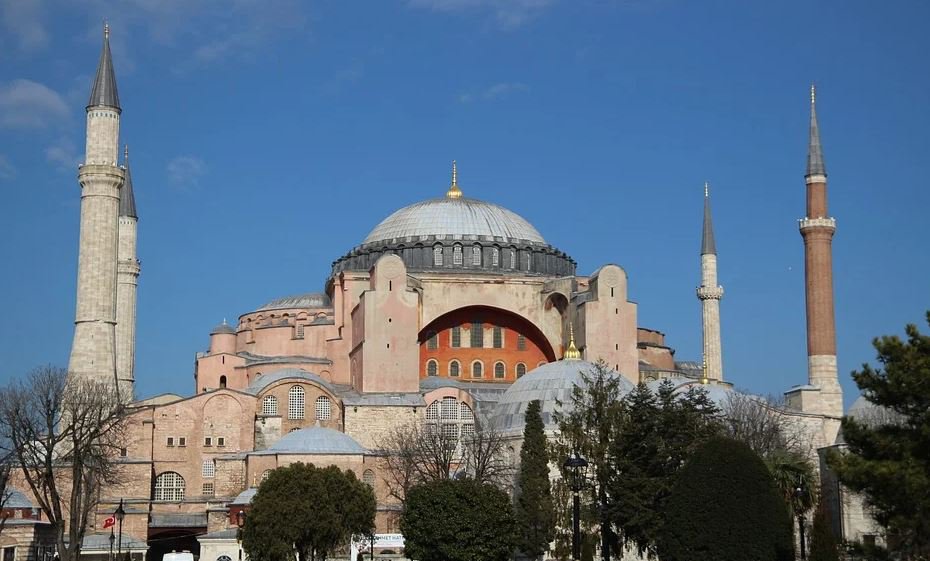
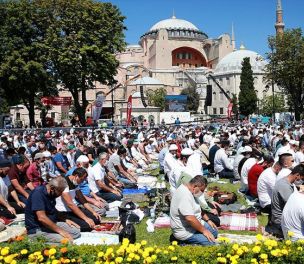
as.jpg)

